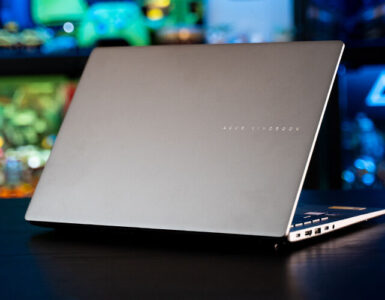The sheer power that full-fledged desktops pack remains an uncompromising draw for some, but the gap between them and gaming laptops has never been narrower. While the latter’s compact form factor reduces some of that oomph, it serves as a more-than-capable alternative for those who lack the space, are not confined to one work or play station, and other similar reasons.
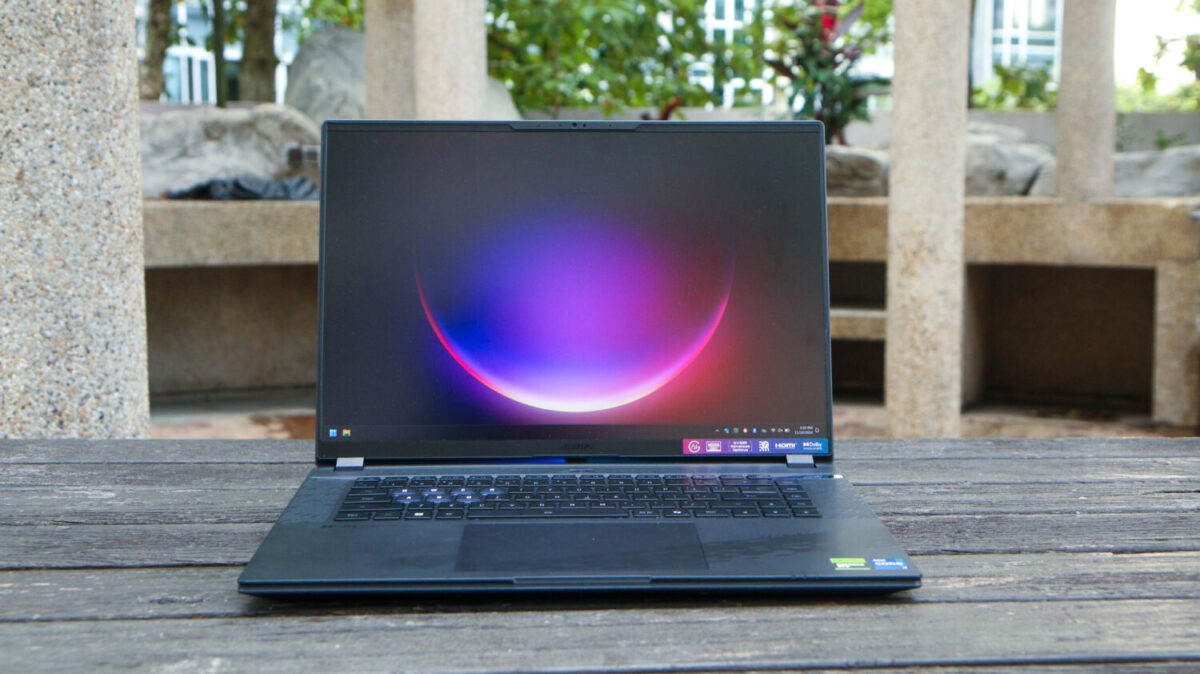
Gigabyte is certainly no stranger to meeting high-end demands, having several offerings in the field. The company’s latest Aorus 16X model, however, is taking a bite out of the mid-range pie, featuring a blend of performance, value, and not-so-subtle style that reinforces its gaming-focused identity. The laptop does a lot of things right as a competent all-rounder, with some missteps holding back its full potential to truly stand out.
Weighing 2.3kg and measuring 35.6 x 25.4 x 2.7cm, it’s not the leanest build but fits nicely in average-sized backpacks, keeping in line with most builds on the market. A minimalist flair graces the aluminium lid, and lifting it reveals the shinier embellishments on its gunmetal-coloured finish: several translucent keys, three colour zones, large cooling vents, and textured detailing running across the right side of the palm rest and down both ends of the keyboard.
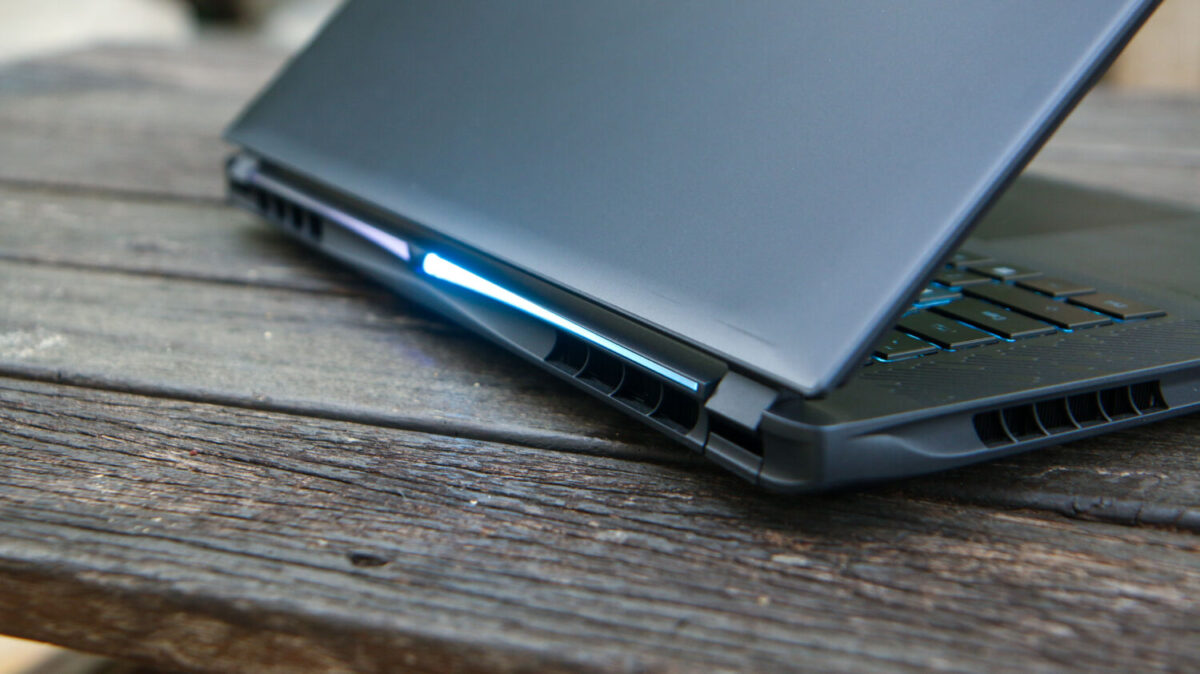
At the rear lies an RGB strip, designed to project the Aorus logo onto the surface behind it which can be turned off if desired. The more interesting design bit is tucked away at the underside, though, boasting a gently sloped panel with jagged, diagonal slits – some of which are hollowed out – and embossed Aorus lettering. In general, the Aorus 16X feels solid to the touch and shows no visible signs of flex, living up to the heft that it paints.
Connectivity options are generous, which is always a plus point for users. A USB Type-A 3.2 Gen 2 port, a Thunderbolt 4 USB Type-C slot, a microSD card reader and 3.5mm combo audio jack sit on the right side, joining a Type-A and Type-C connection, an HDMI 2.1 port, an Ethernet jack, and the power cable on the left. The ports are located more forward than usual, occupying the lower end of the chassis instead of mid-way, so left-handed users will have to contend with external peripherals or wires encroaching on their mouse space.
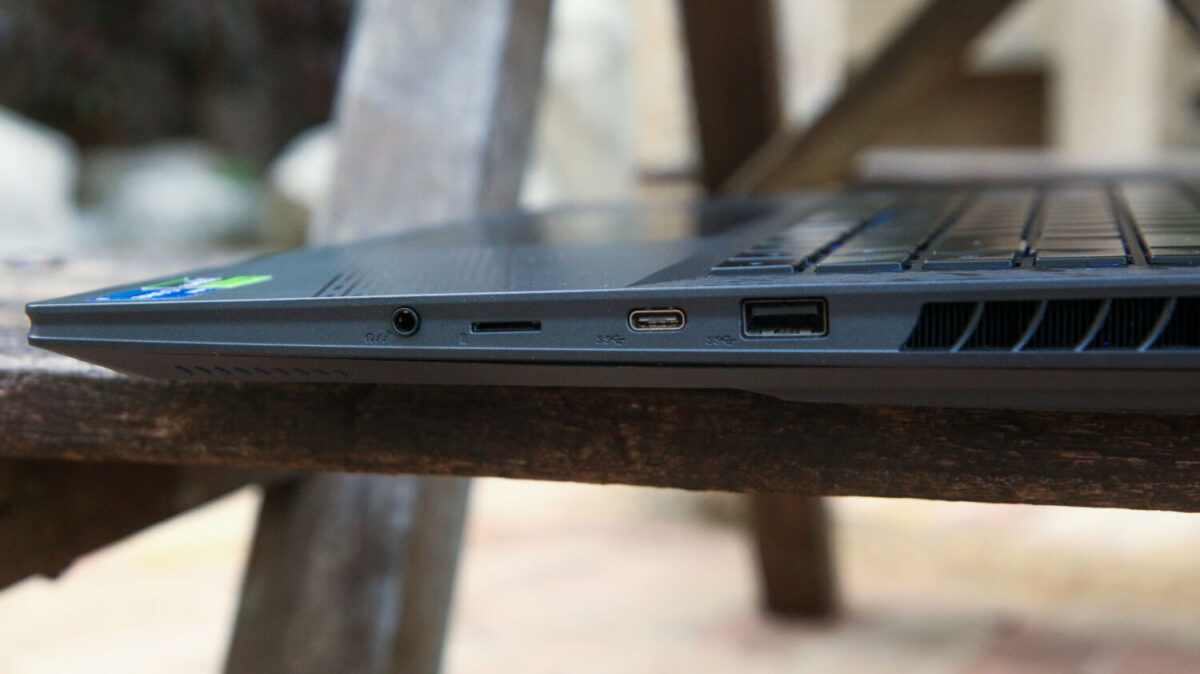
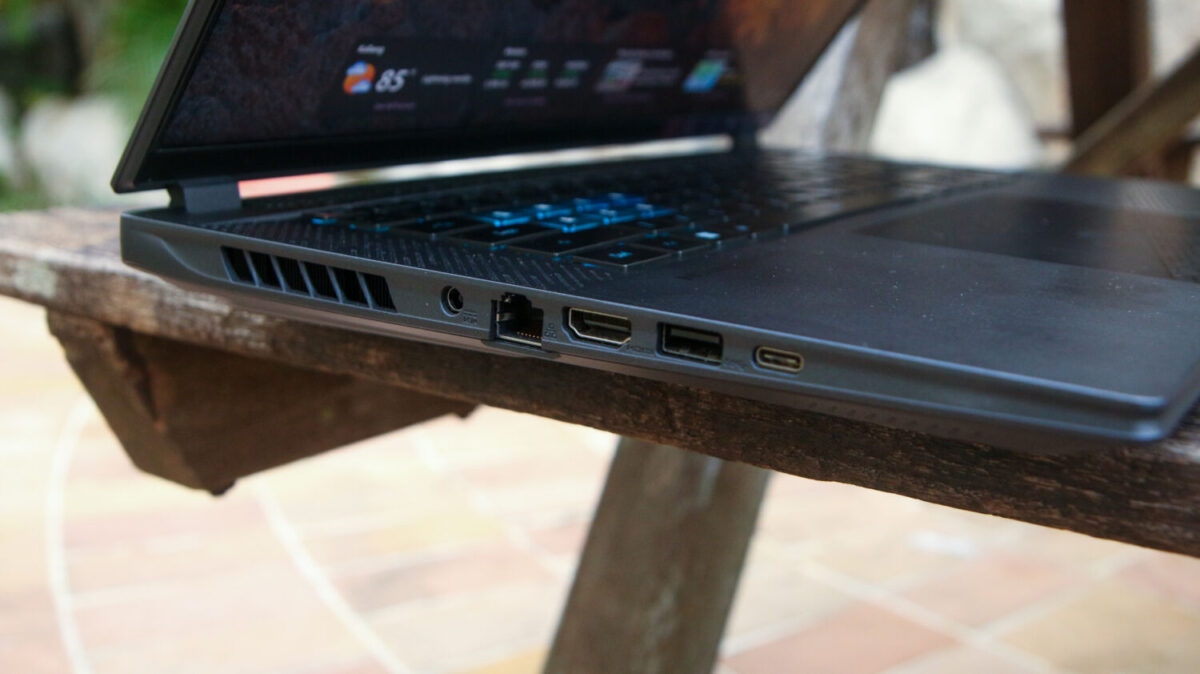
As mentioned earlier, the keyboard features clear keycaps amid a sea of black. The WASD and QER chiclet keys – the most used in PC gaming – are neatly illuminated, with bright backlighting making them easy to spot in the dark. It brings a stylish touch without being too over-the-top, alongside reasonable colour options that can be adjusted via the preinstalled Gigabyte Control Panel app.
In practice, the typing experience proves to be comfortable and precise. The keystrokes are crisp and satisfying thanks to a 1.7mm travel distance, but some may still find the keys a little mushy depending on personal preference. There’s a rubbery feel to them, accompanied by some cushioning at the base that reduces bounce. A numeric keypad is missing here, replaced by dedicated Home, PgUp, PgDn, and End keys on the right side, which causes a slight misalignment against an oversized touchpad.

While mounted in the middle of the entire keyboard length, this additional row means the user’s hand won’t be exactly in line with the latter’s placement when typing. The off-centre positioning is very much a small nitpick, however, an almost insignificant compromise in exchange for a smooth, responsive matte surface and quiet clicks. Even so, the touchpad can be a little inconsistent at registering pressure, especially on the upper edges – pressing down on the lower part yields the best results.
The Aorus 16X touts a 16-inch 165Hz panel, alongside a resolution of 2,560 x 1,600, a 16:10 aspect ratio, and ultra-slim bezels. It’s no OLED but comes well-equipped to deliver crisp images, sharp detail, and accurate, vibrant colours, with hints of slight oversaturation in more visually striking experiences like the trailer for Arcane Season 2 or gaming titles like Cyberpunk 2077 and Hades 2.
The snappy display also supports Nvidia’s G-Sync tech to reduce screen tearing, and Advanced Optimus for swapping between integrated and discrete GPUs without a system restart. Capping the viewing enjoyment off is an anti-glare matte finish, a 508-nits brightness level, and Dolby Vision support.
Now, on to the nitty gritty: stress testing. Looks don’t mean much to a gaming machine if it fails to run well, and fortunately, there’s little to worry about here. The Aorus 16X comes in various configurations, topping out at an Intel Core i9-14900HX processor, a Nvidia RTX 4070 GPU and 32GB of RAM, with our review unit boasting a Intel Core i7-14650HX CPU, RTX 4060 graphics card, and 16GB of RAM. Regardless of model, users will be able to expand memory and storage options up to 64GB and 4TB, respectively.
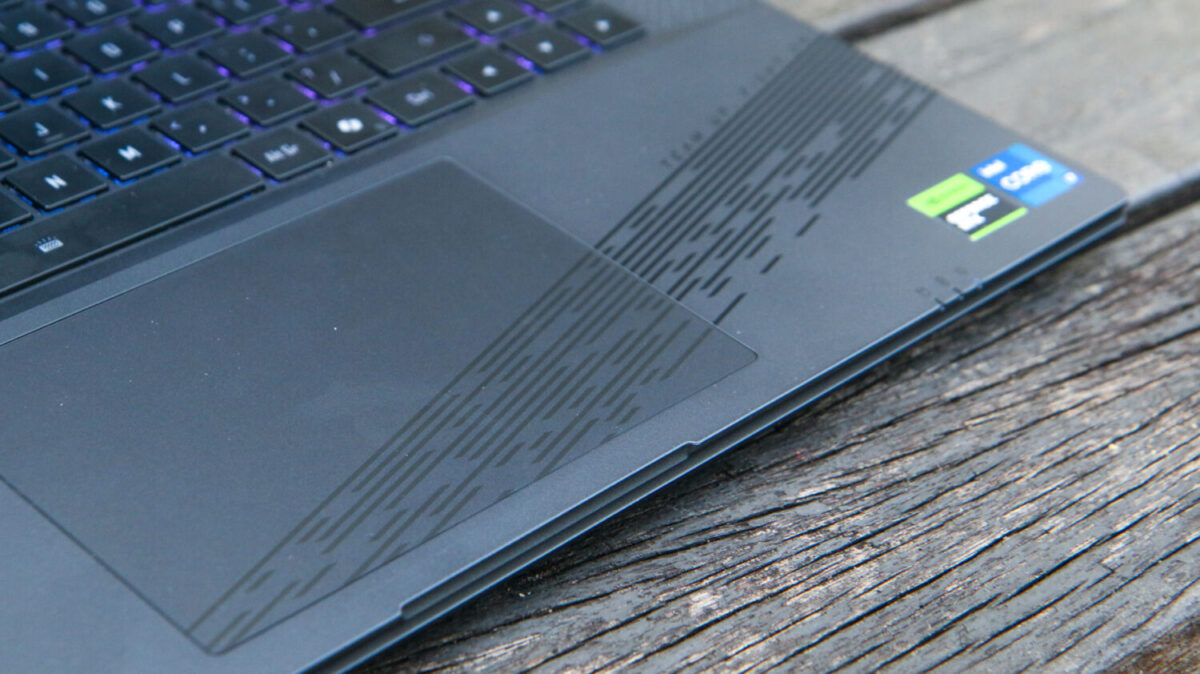
Despite leaning more into entry-level territory, the gaming machine proves competent enough to stand on its own. Crunching the numbers in benchmarking software like 3DMark, Cinebench 2024, and Geekbench 6 yielded the following results – respectable, if nothing particularly outstanding:
- 3DMark Fire Strike Ultra: 6,079 (graphics: 5,950; physics: 26,484)
- 3DMark Steel Nomad: 2,2257 (graphics: 22.58 FPS)
- 3DMark Time Spy: 10,662 (graphics: 10,319; CPU: 13,164)
- Cinebench 2024: 9,783 (GPU), 1,016 (CPU)
- Geekbench 6: 100,496
The scores for Fire Strike Ultra and Steel Nomad in 3DMark are noted to be slightly lower than average (versus 6,357 and 2,336), and while real-world performance does highlight the difference, there’s minimal effect on the overall gaming experience. Averaging 65.25 frames per second (FPS) on Ultra settings and 78.98 FPS with ray tracing set to high, Cyberpunk 2077 mostly delivered a smooth, enjoyable time amid intermittent frame rate drops that pick up when switching between menus and non-gameplay elements to gameplay.
Likewise, the sporadic dips in Black Myth: Wukong do little to mar the fun. The action title plays out fluidly at high settings with an average frame rate of 60 FPS, allowing for a proper showcase of its combat and visual prowess, but it tends to stutter when there are more particles on screen, especially during cutscenes – and more specifically, the opening sequence.
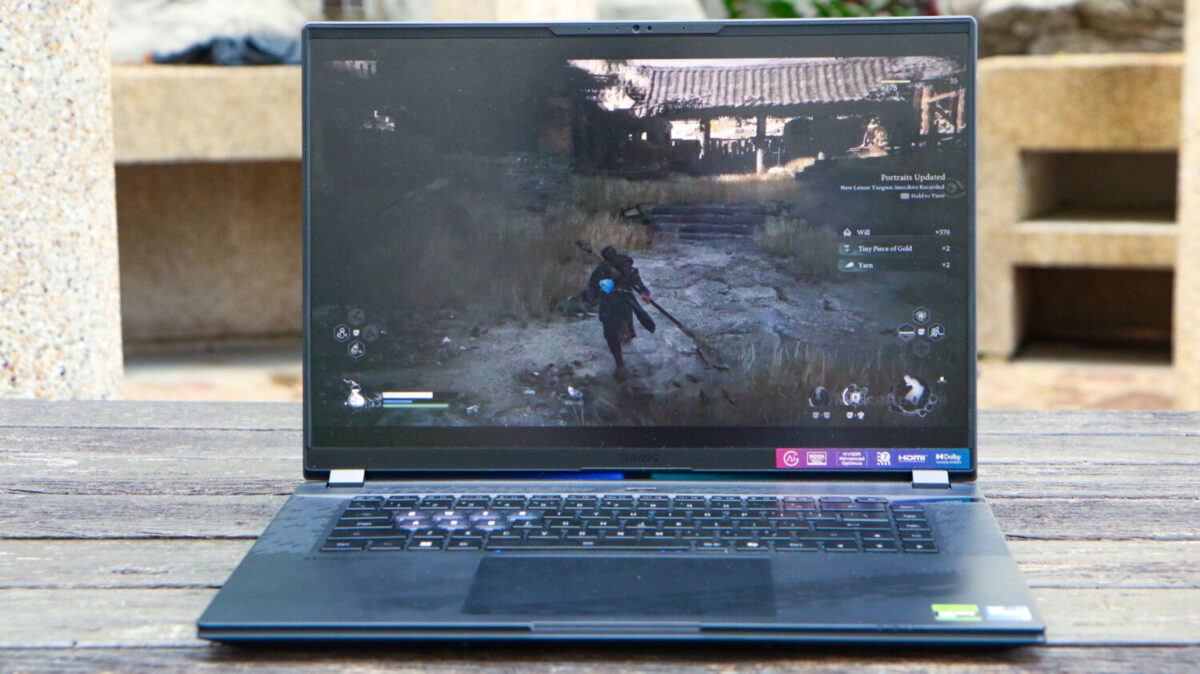
Horizon Forbidden West is perhaps the best show of the laptop’s potential, clocking above 55 FPS consistently at the highest settings. Whether it’s climbing dangerous structures, shooting arrows, or stealthily taking down machines with Aloy’s spear, no discernible lag in performance was observed.
What caught attention would be the under-the-hood whirring. Equipped with dual power-enhanced cooling fans, the Gigabyte Aorus 16X can be fairly loud at full tilt while gaming, even at lower loads, so headphones are recommended for users who are bothered by it. The noise is a necessary compromise, however, as the machine proves efficient at dissipating heat and keeping temperatures lukewarm – not blistering hot – at most. Outside of heavy loads, there wasn’t much whirring to speak of.
It’s the same with productivity tasks. Day-to-day tasks are a silent affair, and the fans only go into overdrive when GPU demands hit the roof, such as juggling between two heavy-duty apps or rendering a complex 3D model. Do take note, though, that performance takes a hit when unplugged, with USB-C charging also throttling GPU and GPU speeds. To work around the issue, always use the default power brick for charging.

On its 99Wh battery, the Gigabyte Aorus 16X is barely able to power through a typical eight-hour workday. It clocked seven hours and 20 minutes on the PCMark 10 battery test, aligning with daily use involving basic activities like surfing social media websites, answering emails, reading and writing articles, and texting. As usual, mileage will differ depending on user needs and use cases, so it’d be best to keep the adapter within reach at all times.
With artificial intelligence (AI) hailed as the next big thing in tech, most, if not all, brands have already embraced the hype. Gigabyte is no exception to the rule, slapping an “AI gaming laptop” label on this new offering – except it doesn’t really fulfill the definition. For starters, there’s a lack of dedicated Neural Processing Units (NPUs), a must-have component for AI PCs, which are only available on the latest Snapdragon Elite or Intel Core Ultra processors, and not on the Intel Core i9-14900HX processor it sports.
Instead, the GPU is the source of its AI capabilities, marking no difference from other RTX-powered offerings on the market. It also doesn’t help that the brand’s software solution, the Gigabyte AI Nexus, seems to be stuffed into the mix just because, featuring an unintuitive layout and missing explanations on how the AI elements will enrich the user’s experience. That’s not to say the laptop isn’t capable of executing AI tasks – there’s more than enough oomph to go around, but don’t expect any groundbreaking encounters.

Starting a little high at S$2,199 for a mid-ranger, the Gigabyte Aorus 16X presents a convincing show of justification through its snappy, solid performance, stylish flair, impressive cooling, and sublime display. Amid its more glaring faults, namely a mediocre battery life and shoehorned AI tools, it finds a keen edge in doing a lot of things right, but not enough to stand out.
GEEK REVIEW SCORE
Summary
Excessive AI branding aside, the Gigabyte Aorus 16X makes its mark as a high-performing machine that promises hardware and display prowess for work and mainly play.
Overall
8.1/10-
Aesthetics - 8.5/10
8.5/10
-
Build Quality - 8.5/10
8.5/10
-
Performance - 8.5/10
8.5/10
-
Value - 7/10
7/10
-
Geek Satisfaction - 8/10
8/10



